Everything that's hip and cool from EyeEm this spring and summer.
Shutterstock, your business models sucks
Flickr has announced Curated Connections, but what exactly is it?
When Flickr and Getty announced earlier this year that they'd not be renewing their licensing deal, I suggested that it might not be long before Flickr unveiled its own in-house licensing project. With well in excess of five billion images on its servers, Flickr has a huge stock library waiting for exploitation: easy sales for Flickr users and a cut for Yahoo! is a win-win situation. We had a four-and-half month wait for the grand reveal: today, Flickr announced its Curated Connections project. Well, I say it was a grand reveal, it was more of a swift overview.
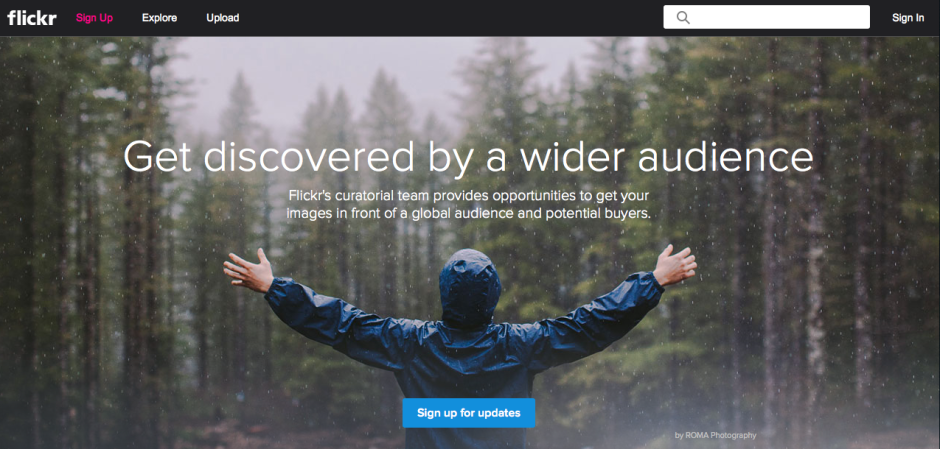
What is Flickr offering photographers who sign up to the Curated Connections project? It's a good question that doesn't have an especially solid answer, for the announcement is curiously light on specifics. The Flickr blog post tells us that they are: 'excited to introduce a new way for you to partner with photo agencies, editors, bloggers and other creative minds who are seeking original content like yours.' But there's no indication of what this new system is or how it will operate.
Flickr's curatorial team will be there to 'provide assistance, outreach and connectivity to help you get your photos licensed!' But it doesn't detail what this will entail. It's hardly surprising that with such a vague outline of what they're planning there isn't any significant information concerning such trivialities that interest photographers, namingly licensing terms. We're told that they'll be transparent and easy, although as things stand the terms remain mythical beasts.
The sign-up page tempts users with suggestions that their images might be used by media behemoths including the BBC, Gizmodo, the New York Times, and Reuters. There's even a mention of previous licensing-partner Getty. As you might expect from a Yahoo! owned company, there is potential for your images to be used on other Yahoo! owned, sites, too. Part of the 'outreach and connectivity' that Flickr hopes to offer are opportunities to complete commissions and assignments. Flickr's definitely talking the talk here.
Being able to share your images and make them available for licensing in one place is appealing—and it's something that other photo-sharing sites, for example 500px and EyeEm are also beginning to entertain—but so much of that appeal is going to depend on how the deals are cut and the terms under which images are released. Allowing Flickr to deal with the tedium of bureaucracy might not be suitable compensation if the remuneration is insufficient. Will it walk the walk?
 Can we have a baked and iced cake, please, Flickr? It beats a half-remembered recipe.
Can we have a baked and iced cake, please, Flickr? It beats a half-remembered recipe.
So do tell us, Flickr: what exactly are you proposing here? There's a lot of ethereal chatter and not much substance. I'm sure that you're excited by your new project and you want us to be excited about it, too, but it rather helps if you share with us the pertinent facts. It's something of a half-baked non-announcement at the moment. We've no idea if the cake's carrot or chocolate or something else entirely. Provide us with an actual announcement that you've baked and iced and we might be slightly more enthusiastic. Or not. Depending on what you suggest (I prefer lemon, for reference).
If you are interested in Flickr's Curated Connections, you can sign up here.
Hot and happening trends in stock imagery according to iStock by Getty
A few weeks ago we published our guide to selling stock images, with content suggestions, style advice, and labelling tips, among other hints. This week, iStock by Getty Images has released an infographic documenting the eight leading trends in business imagery that they've charted over the past year. If you're looking to sell business images, these are the kinds of subjects that buyers are after:
- Transparency and openness - business-type scenarios shot through windows and glass
- Show me "Innovation" - unusual concepts, unusually shot
- The New Leader - think start-up trendy rather than power-dressed exec
- Service-oriented workforce
- Dads on deck - or hands-on dads
- Women in power - we're growing in number
- Hipsters are taking over - beards, bikes, and coffee (apparently)
- Working from home - more of us are doing it, so it needs to be reflected

Get cracking, then!
For one day only iStock is paying 100% royalties toartists
The terms and conditions under which photographers sell their images via stock agencies are frequently criticised and as a consequence the money that they can make from sales is often lamented. For one day only, however, iStock by Getty Images is trying to make photographers feel better about the deal and their contribution to the stock business. As part of its celebration of Small Business Week in the US, it has declared 14 May 2014 to be '100% Royalty Day'. 100% Royalty Day means that:
- 100% of sales on all exclusive/only available from iStock content sold through cash and credit file downloads will go directly to iStock by Getty Images artists
- double royalties will be paid to artists whose exclusive content is sold via iStock by Getty's new subscription scheme
However, it's not quite the gold-plated celebration of small businesses that it appears to be at first blush. That pesky word 'exclusive' makes all the difference. If you're not afraid of a little stock agency promiscuity then you won't be eligible for any extra pennies accrued. And of course, it's not exactly easy to encourage people to select your content for download on 14 May; they'll download it at their convenience. Still, if you are an exclusive iStock by Getty contributor, it's better than a poke in the eye with a sharp stick.
Feature image: Amesy/ iStock by Getty Images
7 super suggestions for selling stock
Love them or loathe them, stock agencies are a significant sector of the photography industry. How else do people who are looking to buy images for use in publications, in advertising campaigns, or on websites acquire them without commissioning a photographer? For some photographers, then, selling stock imagery can be an important source of income. It might not keep the wolf away from the door, but it could well keep the candles burning. In which case, how do you make the best of it? If you're looking to make a bit of pin-money selling your photos, what are the dos and don'ts? If you're already in the stock game, how can you do it better? I spoke to a variety of stock agencies—Alamy, Shutterstock, and EyeEm Market—who kindly shared their words of wisdom to help you make the most out of the stock market.
Content
It might come as a surprise, or it might not, but stock agencies need photos of anything and everything. That's pretty much the entire point of them, you see. Alan Capel, Head of Content at Alamy says: 'Everything can be updated, good photographers will look for a new take on old clichés.' Like me a few weeks ago, people need generic photos of the father-of-the-bride. However, there are particular types of imagery that are preferable and subjects that have growing demand. So think about producing:
- Real-looking, natural-feeling photos; posed and staged photos aren't so in demand
- Photos that are out-of-the-office and out-of-the-ordinary; think oil rig as opposed to desk, farm yard instead of back yard, mountain-top rather than table-top
- Images from the emerging markets: Brazil, Russia, India, China, South Africa
- Healthcare and medical photos
- Anything that documents culture and diversity
- Photos local to you - who else is there to shoot them?
'We’d love to see more adventurous shoots in more unusual locations/scenarios!' says Capel. While he knows that might be easier said than done, 'Photographers are tenacious and resourceful and they will find a way.' And if you're pursuing the emerging markets theme, that should include lifestyle and local culture as well as business and industry photos. Remember: there are consumers in those emerging markets, too!

Is there anything that absolutely should be avoided? Well, if a photo's good, anything goes. But over at EyeEm, they warn people off of pets, pot plants, and predictable self-portraits.
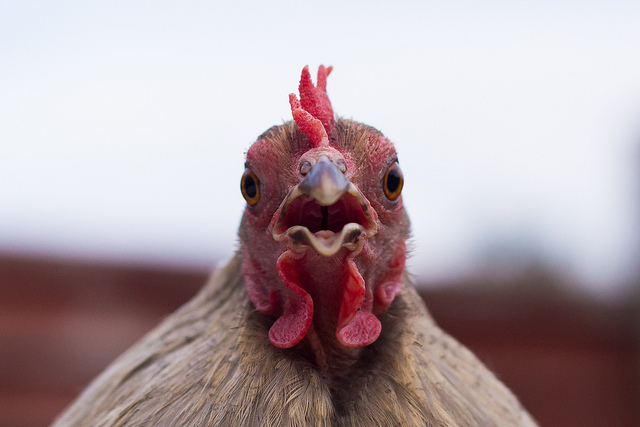
Spotting trends
It's probably a good idea to keep one eye on what's happening now and another on the horizon. Scott Braut, VP of Content at Shutterstock, recommends using social media to gauge trending topics and examining news headlines for common themes (for example politics, pop culture) to help you pick out favourable subjects. But at the same time, think about what might be happening in two, three, or four years' time: Olympic Games, World Cups, centenaries, and anniversaries.
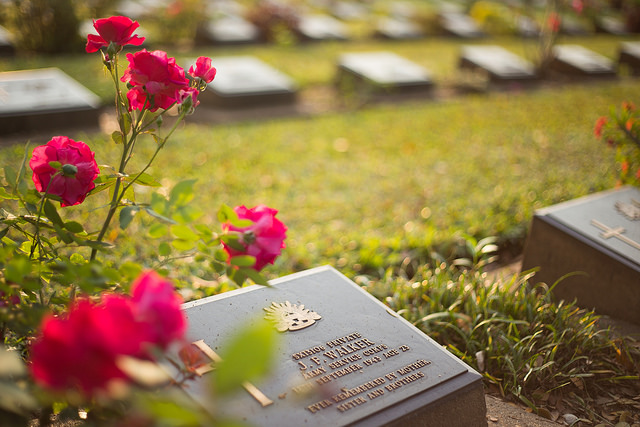
Style
It's always best to stick to what you know best, which is your own style. But Capel says not be afraid of adding another string to your bow by including mobile images—Alamy has the stockimo app for that, and there's the new EyeEm Market, too—and Braut says that photos with Instagram-esque filters are popular.

Selection
Be ruthless when it comes to submitting photos to stock houses: if something about an image doesn't feel right, it's probably wrong. Don't include it.
And both Braut and Capel say the same thing about repetitious photos: don't do it! Make sure that each photo you submit is distinct, so that they don't detract from each other.
Accessibility
People need to be able to find your images to buy and use them. This means that they need to be identifiable through tags, labels, and key-words. Capel suggests thinking along these lines:
- Literal - what is actually in the shot
- Conceptual - what moods, emotions, concepts does the shot evoke
- Photographic – predominant colours, any techniques or treatments used
At EyeEm, their top search terms include the abstract, such as 'happiness' and 'hope' as well as more descriptive, for example 'family' and 'fitness'. Spread your net far and wide, but make sure your terms are accurate.

And don't be afraid to re-visit and re-label photos after you've submitted them. You never know what you might think of with fresh eyes.
Practicalities
Photos that have people in them will require a model release if they're to be used commercially. Logos have to be rights cleared and securing that can be a proper pain. It's much better to do away with labels on bottles, use plain clothing, and hide obvious branding.
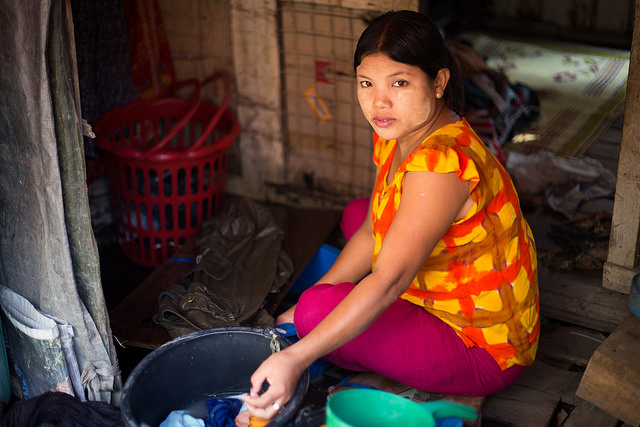
Finally
The word that came up again, and again, and again was 'real'. Buyers want imagery that's natural and believable, not contrived. There's a whole world out there waiting to be documented, so go explore!
Photo-sharing app EyeEm launches EyeEm Market - a sales platform for mobile images
Before Instagram hit the app store with its mission to square crop all of our photos and apply one of a dizzying array of filters, there was a Berlin-based start-up called EyeEm that was offering mobile photographers the opportunity to share their images and get to know each other. Instagram might've grabbed the headlines and the Facebook swag, but EyeEm didn't go anywhere. EyeEm quietly grew its network of users to over 10 million and concentrated on helping them to get the most out of their mobile photography with challenges, blog post tutorials, competitions, and allowing mobile photographers to connect with each other. That's paid off and it's allowed EyeEm to start on its next venture: EyeEm Market. It's what it sounds like, a stock house for mobile images on EyeEm. EyeEm users were invited to join by email this morning and the plan is to launch in late spring 2014.

Terms for members have already been set out: 'You always remain the copyright holder of your images and make 50% net revenue from each photo you sell.'
While EyeEm hasn't disclosed the details of the potential buyers it has approached, it's confident that it could be helping its users to take their first steps into a new branch of the professional image market. To that end, it's published some image guidelines for those who are hoping to make some sales. This includes no pets, no plants in pots, and no selfies (unless they're particularly unusual); and to concentrate on the holy trinity: business, health, and family. Not forgetting geo-tagged landscapes and images that can be hard to otherwise get.
Is this another nail in the coffin of professional photography, showing how everyone can now be a photographer and make money from their smartphone cameras? Regard the situation from one stand-point, and yes, that is exactly what EyeEm Market means. But think about it from a slightly different perspective and it demonstrates how the image market place is changing.
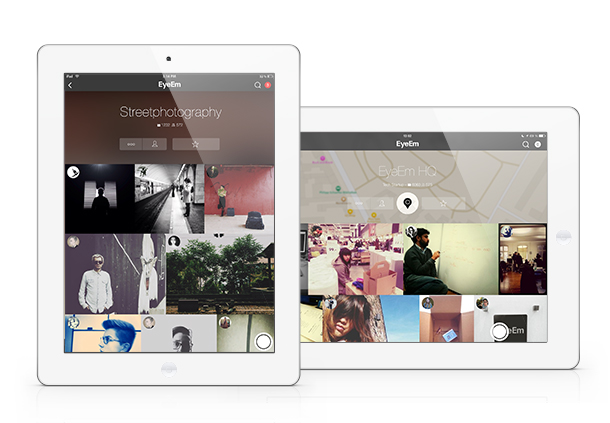
Photo-buyers want mobile images. They're part of the photographic landscape now—part of the zeitgeist, if you will—and we can't put the genie back in the bottle. Instead, we have to embrace it. If we can present photo-buyers with an adequate means of accessing and paying for the images that they want, there's a chance it will drive up quality and ensure that the creative industries are rewarded adequately. It's a damn sight better than images being used without recognition and without recompense because there's no means of buying them.
We can't ignore the market; we have to seize all the opportunties that it presents.
And EyeEm has seized its opportunities and shown that there's more than one way to make a buck from photo-sharing apps.
PhotoRankr is a photo sharing site where you can sell them, too
It's easy to think that there are far too many photo-sharing websites in the world. How many can you name in the next ten or twenty seconds? And how many of them meet your needs and expectations? For brothers Jacob and Matthew Sniff, the fact that these sites didn't meet their expectations inspired them to build their own; they called it PhotoRankr. It's a platform that gives photographers the ability to share and sell their work in one place. It's a social network where photographers can interact, learn from each other, and rate each other's images in a gamified setting. It's an online marketplace where they can sell their images at their own price. And it provides photographers with portfolio hosting to help them make the most out of their photography.
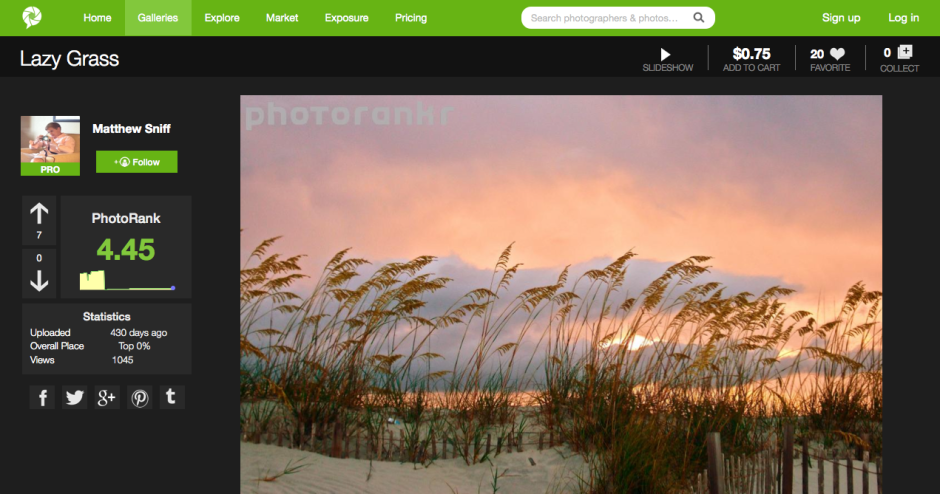
Does it work?
PhotoRankr was built by photographers who felt frustrated that their images weren't accepted for sale by the major stock houses. They wanted anyone who takes photos to have the opportunity to be able to sell her or his work. As Jacob Sniff puts it: 'It’s a fact that more people who [sic] have it [photography] as a hobby than as a profession, and the barrier to entry is low. Yet, no site openly allows for anyone to sell images today and this is a mistake.'
In addition, they've attempted to make it more appealing to photographers by building in the social elements that bring success to sites such as Facebook and Flickr. In particular, rather than having a picture editor determine whether or not a photo makes the grade, any photo is allowed to be displayed on PhotoRankr, but the community votes it up or down.
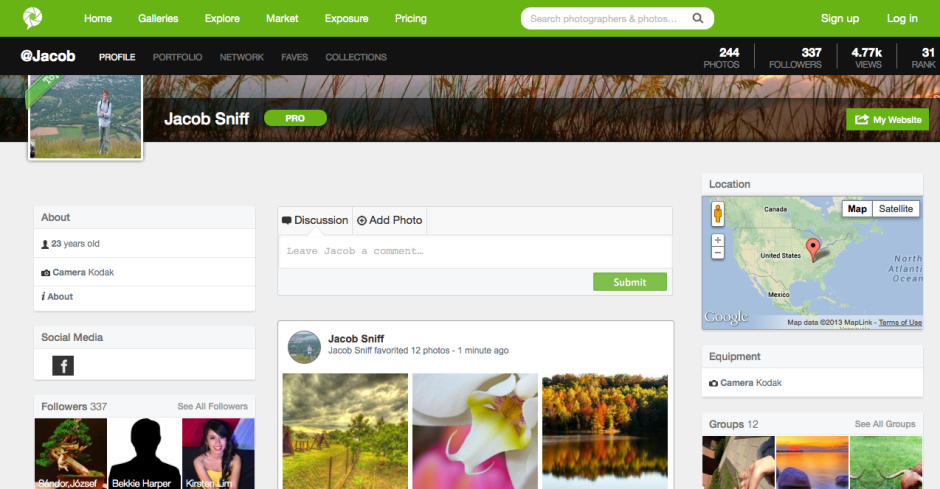
It's a reasonably priced platform, providing photographers with three subscription options. There's a free account to which they can upload 30 images each week, charge up to $20 for them, and retain 60% of sales. The 'Plus' account ($40/year) allows for 10GB of uploads, has a $100 price cap, and a 70% sales retention. Those subscribing to a 'Pro' account ($100/year) have no pricing limits, no upload limits, and retain 90% of their sales fee.
The aim is admirable, but being so photographer-oriented is also the site's failing. In constructing a platform aimed at photographers, they haven't paid as much attention to the buyer as they should have.
First, what type of buyer are they attempting to attract? Are they attempting to create a more stock-house model, with digital image files provided for professional use? Or are they aiming at the fine art market, with canvas prints? Not all images are able to be purchased as prints, but all are available as digital files; however, there's a distinct feeling that the collection is more skewed towards hanging on the wall than inclusion in corporate booklets.
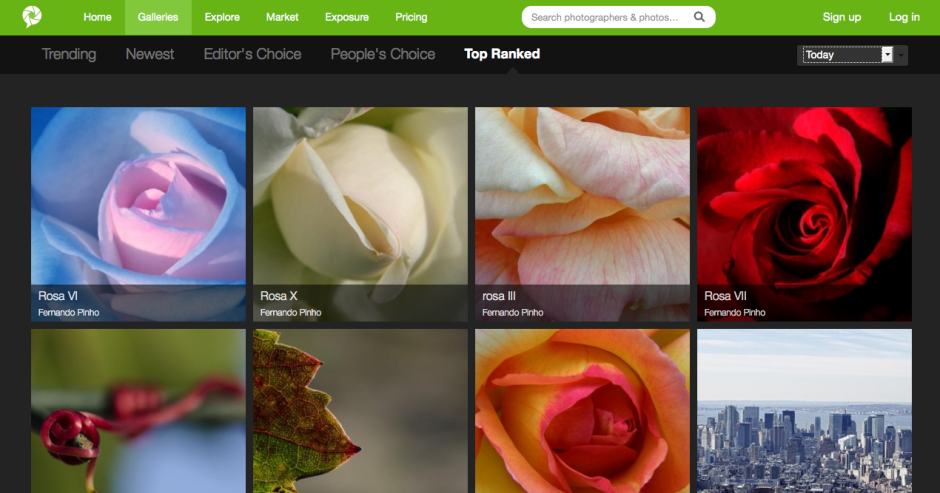
Stock houses work because they provide a diverse spectrum of images; these images include subjects that aren't necessarily pretty or compelling, are perhaps obscure, but are still in demand. Examples would include factories, rotting meat, or ploughed soil. When you introduce the social element into ranking images, it's going to be those that are appealing and attractive that rise to the top, not necessarily those which are needed. You'll end up with a market where the photographers are at risk of serving themselves and their social ranking, rather than the customers.
If the intention is to allow people to hang images on their walls, there needs to be a more streamlined process that allows buyers to see more easily in which formats their chosen images can be purchased. Some are available as canvases, some as posters, some as postcards, some not at all. It isn't obvious immediately, though.
Second, searching for images suffers from a few hiccoughs, too, with duplicates appearing with alarming frequency.
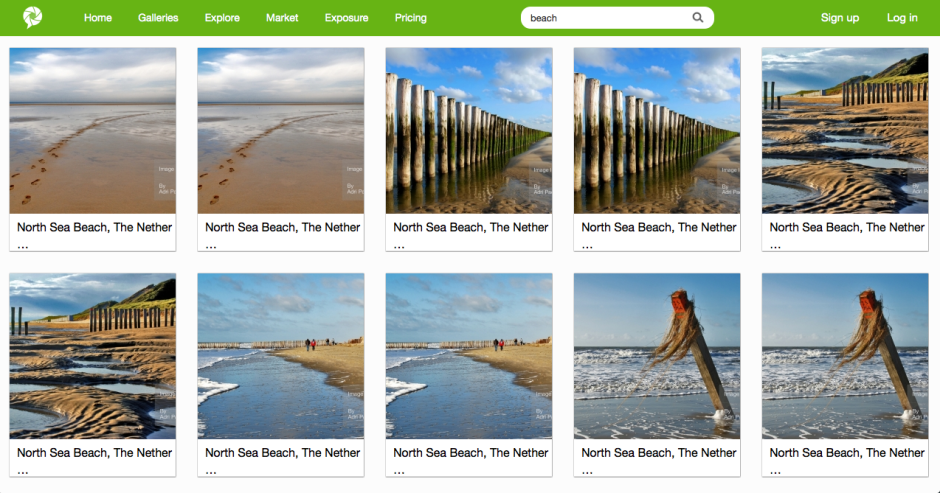
Finally, the purchase interface requires some refinement. The licence agreements are buried away in the bowels of the terms and conditions section, rather than being a click away from each photo. Anyone buying an image needs to be able to identify how they're able to use it quickly and easily. Chashing through the website is not user-friendly. The shopping cart page does not render properly, which makes it unappealing for purchasers. And there is no easy means to access your shopping cart from the front page or a search page. This makes browsing after you've made a selection and then wanting to return to the cart without attempting another purchase impossible. It might be easy for a PhotoRankr photographer to sell her or his images; but it isn't easy for the public to buy them.
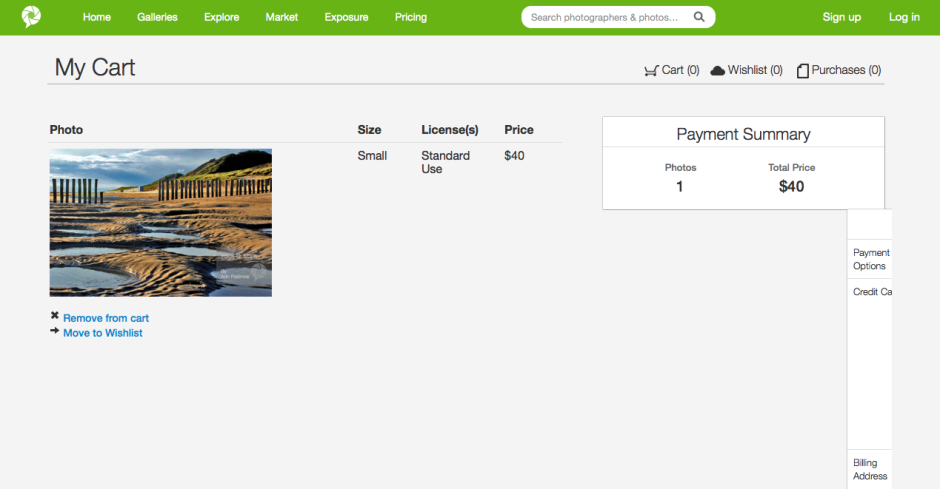
I think PhotoRankr needs to consider what it wants to be and what its priorities are. Is it a 500px-style community of photographers that offers sales on the side - in which case, they're already competing with an established market. Or are they a sales site where consumers can find what they want and need, purchase it easily, and provide photographers with a useful sales platform? If that's the case, they need to pay some more attention to the customers.
If PhotoRankr can decide on its direction, and clean up its sales mechanism, I do think that it has potential. And I don't want to see the work of a dedicated group of people come to nought.
CSR Pictures, a stock agency devoted to corporate social responsibility images, wants contributors
There are hundreds of stock agencies out there, so if you want to break into the market, you have be certain of at least two things; first, that you're providing a service that buyers are demanding and second, that your business model is one that photographers will be happy to supply. On the Ground Media thinks it has identified a niche and from early 2014, it hopes to be providing images specifically relating to corporate social responsibility and sustainability through its new stock agency CSR Pictures. Thinking that a stock agency devoted to corporate social responsibility images might be somewhere on the small side of niche, I asked the people behind it how they felt they might attract a client base. It's not as if the sorts of images that people compiling CSR communications are thin on the ground; type 'poverty', ''money laundering', or 'fraud' into Getty, Alamy, or Corbis and you're presented with thousands of photos. If you're looking for rain forests, polluted oceans, or chimneys belching fumes, you've an even larger selection. Furthermore, when iStockphoto has just changed its name to iStock by Getty as a reflection of people identifying with the brand names, there's a case for bigger is better.
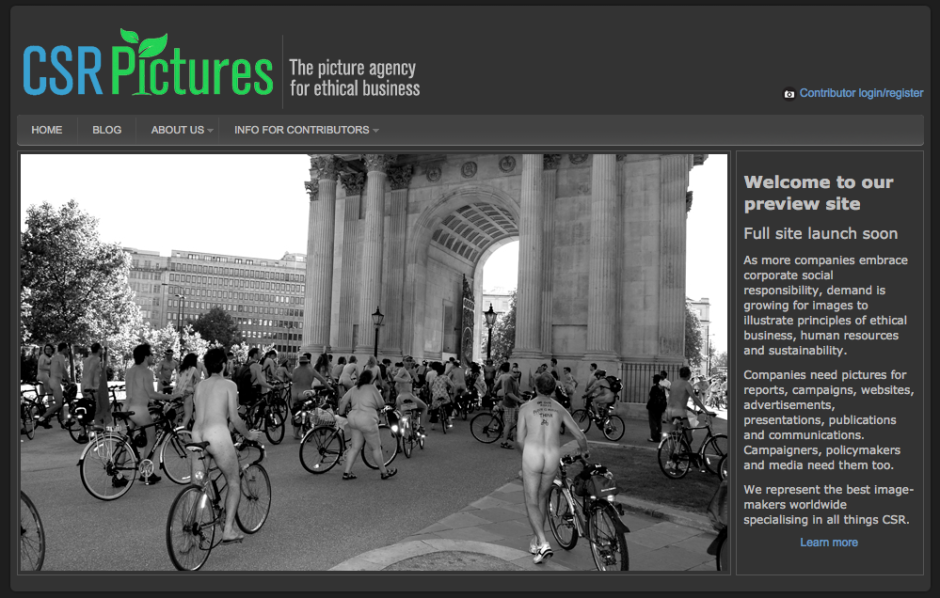
CSR Pictures isn't concerned by either of these issues. To start: 'Our research suggests that many of the people who need to bring CSR themes to life—CSR managers, corporate communicators, even HR staff—don’t necessarily have the time or inclination to sift through endless images. They’re not traditional image buyers. They want a much more focused search experience. And they want us to work with them to understand their needs and channel to them a steady stream of top-notch images.'
As for the sorts of images CSR Pictures wants to supply, it recognises that there are plenty of generic photos, but very few that are specifically CSR-oriented, for example impact investing, compliance with anti-bribery legislation, mining industry transparency or beneficial ownership of shell companies. It's CSR Pictures' aim to 'work with some of the best image-makers around the world to come up with new and compelling ways to illustrate such areas.' In its opinion, there really is a gap in the market.
Market duly identified, it needs some photos. It is, therefore, inviting photographers the world over—including those from Africa, the Middle East, Asia and Latin America, many of whom lack outlets for their work and steady income streams—to submit their applications to contribute. If you're wondering what sorts of images it's looking for, there's an extensive list on its website. You can submit your application on the site, too.
Should everything go well, CSR Pictures aims to establish a global network of photographers and designers for bespoke photo shoots and projects that its clients can commission.
There isn't a pricing structure in evidence on the site yet, but I've been told that the cheapest royalty-free image for web use will be in the region of £20 to £30 and the website states that each sale is split 50/50 between photographer and agency. They don't demand exclusivity, either. If you've the right images and the agency will be as much in demand as it thinks it will, it could make you a few pennies.
Interested? Think it has legs? All of the details and the opportunity to sign up to contribute are on its preview website.







